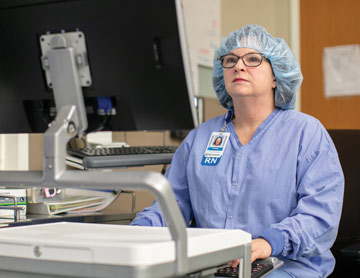If your surgeons have too few or too many of the instruments and supplies they need for a case, your preference cards are inaccurate and outdated. It's too few if your nurses and techs frequently make mad dashes from the OR to the supply room to retrieve missing items. It's too many if your surgeons don't use half the supplies you open. Either way, you're not alone if your pick lists need to be picked over to add what's missing or remove what's not needed. Here are some steps you can take to stack the deck in your favor.
1 Audit your preference cards. Verify with your staff and surgeons that your cards are up to date and accurate. Ask things like, "This $1,500 item you used last time, is that something we need to order every time?" In some cases, staff might have added a rarely used device to the preference card. And then, lo and behold, you're ordering — maybe even overnighting — these items and then shipping them right back, incurring restocking and shipping fees, because you didn't need it after all. Have these conversations and make the necessary changes. You'll want to audit on a regular basis — say, once a year.
2 Oversight. Who's in charge of updating and managing your preference cards? If you can dedicate one person to this task — someone to whom everyone consults on changes and provides updated information for revising cards — you'll operate much more smoothly. Beware the nurses and scrub techs who like to have things on hand that aren't usually necessary, but would make them "the hero" if the surgeon actually needs them. Or they order them just in case, so they don't need to leave the OR and chase them down.
3 Don't update preference cards in the OR. It's usually pretty hectic in the OR. Nurses trying to change cards on the fly often are sloppy or make mistakes. Whoever's in charge of updating the cards should do so in a setting away from the OR and, really, away from as many distractions as possible. This is serious work that requires concentration.
4 Provide forms for OR staff. Place blank forms in ORs that nurses can fill out when they feel a card needs updating. This form should include such basic info as date, name of person submitting the form, surgeon and procedure. Specify whether you're adding, deleting or replacing the item, quantity needed, and whether it should be opened or available. Leave space for comments and explanations.
5 Vet changes. Confirm all changes with all affected parties before providing new cards. And proofread any new narrative text for clarity. That's especially important when the card may be several pages long.
6 Always update the pick list and the clinical narrative. When clinicians make card changes, they may alter both the pick list and narrative portions, but not convey the correct information to both. The result can be like a recipe that lists salt (pick list), but doesn't tell you when to add the salt, or how much of it (narrative). If an item is discussed in the clinical narrative but not included on the pick list, it's likely that the item won't be pulled for the case.
7 Clean up duplicates, triplicates, etc. If your preference cards are generated by electronic records, sometimes multiple cards are created for the same CPT code. This can happen due to different diagnoses, if the procedure is spelled differently ("lap appy" instead of laparoscopic appendectomy), even if an extra comma or space is included. Bingo — same procedure and surgeon, but new card. So a nurse might make a change to a card, but it might have been made to the wrong 1 of 11 cards that CPT code generated. On a periodic basis, delete redundant cards. It's labor-intensive but very helpful to have one card to update going forward.
8 Get supply chain staff involved. As your supply chain manager combs through schedules looking for potential items of concern or specialty needs, accurate preference cards can be a fantastic resource for her. Develop a system to communicate inventory changes to and from supply chain staff. If you change your contractor for a stapler, then you need to change the cards for all of the surgeons and procedures that list the old staplers. Remember, pickers are usually non-clinical. If the reference number doesn't match the needed item, they're not going to pick it, and the OR is out of luck.
9 Leverage your reps. Beyond helping the surgeon, manufacturer reps can assist nurses with charge capture and expiration date tracking. They can also provide useful information that you can apply to preference cards — things like manufacturer instructions and contraindications.
10 Go digital. Many facilities are still old school, using formatted paper cards to list surgeon preferences and editing them with pencil and eraser. Others use printouts, some use electronic systems. Consult your EHR or practice management software vendor. They might offer a way to work your preference cards into their systems and integrate them with supply chain management.
.svg?sfvrsn=be606e78_3)

.svg?sfvrsn=56b2f850_5)